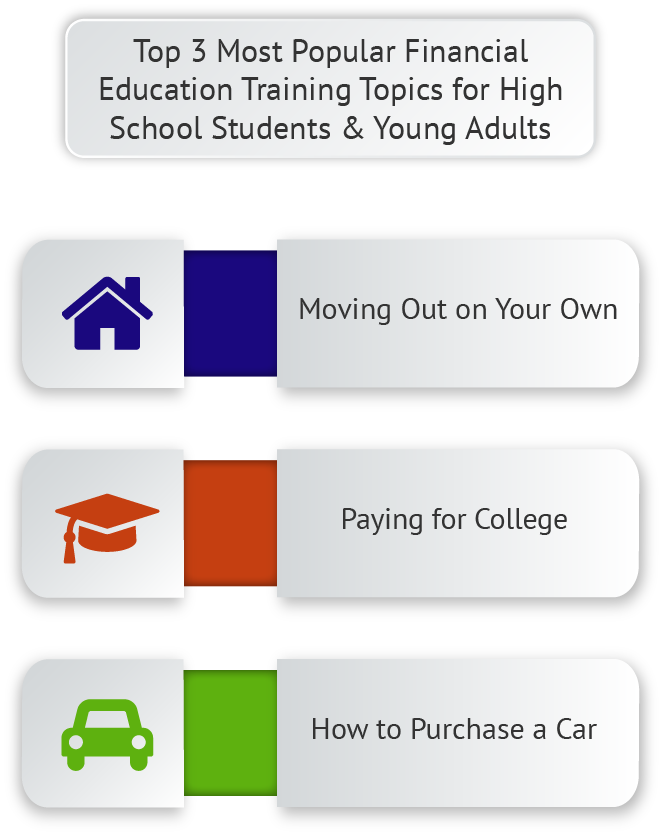Methods to Guide a Personal Finance Class for High School Students
Are you searching for information about how to lead a personal finance class for high school students? This page is an excellent spot to begin. In the information that follows, we describe the content areas most engaging to high school-aged teens, and the age-related influences that determine their financial futures. These resources can inform financial literacy programs for high school youth.
Personal Finance Class High School Popular Topics
When they take a personal finance class, high school students want to learn how to make the decisions that have most bearing on their actual lives. In other words, they need information they can apply in a practical context. We’ve discovered that three primary topics are germane to the financial literacy classes in high school age group:
Tailoring a Personal Finance Class for Young Adults
The best personal finance class for young adults will be one that takes into account the precise types of trials this audience is confronting. Start by considering the myriad influences on teens to develop certain financial behaviors. It all begins with the family situation – their parents’ socioeconomics, demographics, and money management skills. Then as kids mature, they encounter all kinds of pressures from their peers and the millions of advertising messages to which they’re exposed across their lifetimes. Especially given today’s social media landscape, young people are likely to develop behavioral patterns that lean much more toward “buying” than to “saving.”
This personal finance course begins by covering how to deal with your financial situation, which refers to all the financial influences you have encountered since you were born. Your parents may have taught you money management lessons. Even if they didn’t, you were exposed to their financial struggles and/or successes, and that made an impact on how you use money today. Other things that molded your financial behaviors may have included marketing, ads, and social media; your friends; and the environment where you live. This course will define ways in which you can counteract any negative influences on your money behaviors.
At the same time, most teenagers lack skills and knowledge about how to handle finances. Very few youth will be required to take a personal finance class for high school students. Financial education at the high school level is rarely offered and, when it is, often fails to meet standards. And parental guidance is sorely lacking too. A personal finance class for young adults, then, should comprise a piece that covers how to establish the right accounting systems to guide them into the future. At the least, they will need a checking account to manage their bills, a savings scheme, and basic knowledge about retirement planning. In one study conducted in New York City, researchers discovered that combining youth financial education with mathematics instruction showed promise.


